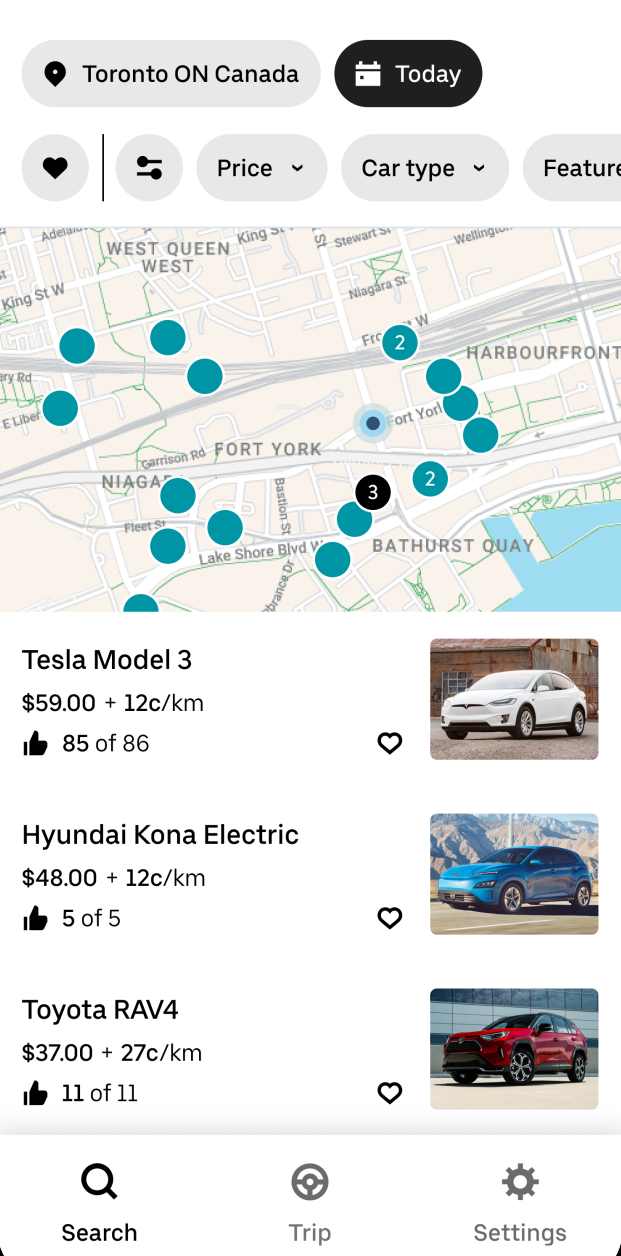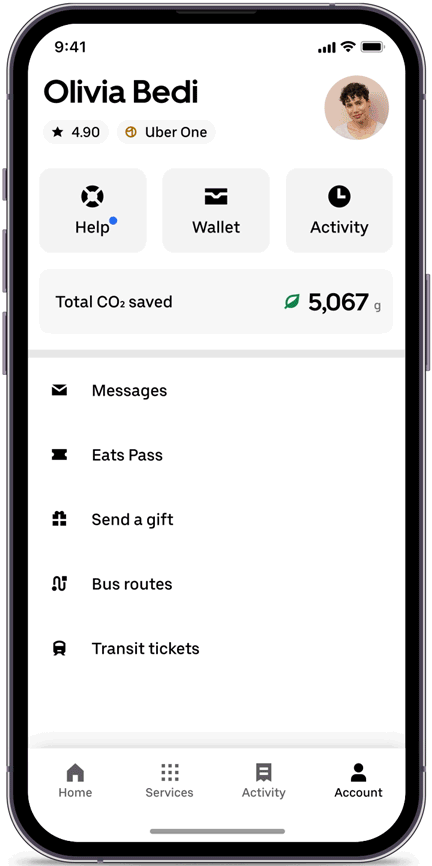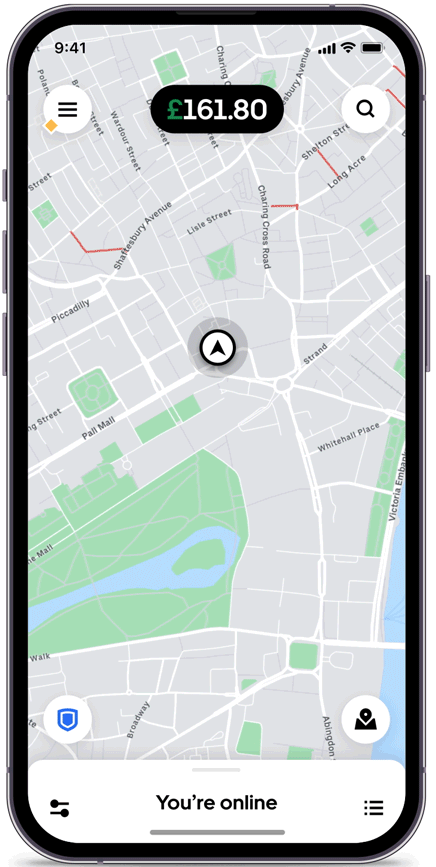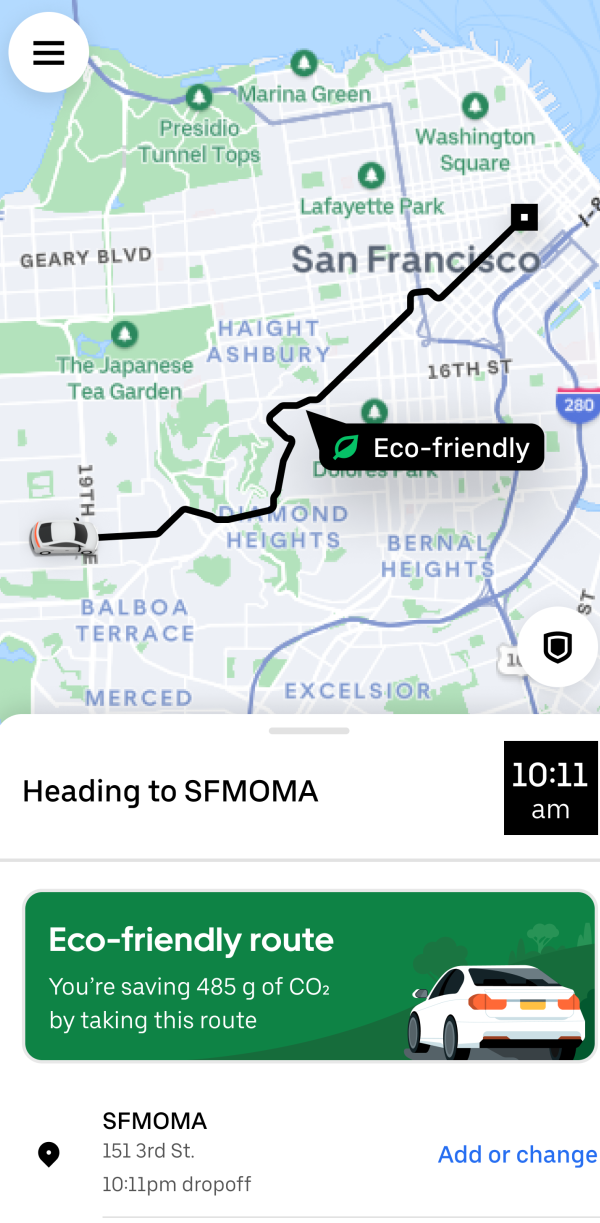Uber unveiled a handful of new eco-focused features, services, and expansions today, as the ride-hailing giant doubles down on previous efforts to align itself with sustainable transport.
The announcements came during the second instalment of Uber’s annual Go-Get product event — the first incarnation was held in New York last month with a focus on family, with today’s sustainability-themed follow-on event hosted in London.
“Uber was founded on the idea of making it absolutely easy for you to get from point A to B,” Uber CEO Dara Khosrowshahi said on stage. “Now we have to make it easier for the 130 million people who are coming onto our platform on a monthly basis to get from A to B — but in an environmentally sustainable manner. That’s going to be the Northstar that we’re aiming for across the company. We’re going to make it easier to drive green. We’re going to make it easier to ride green.”
For rent
First up, Uber is expanding its existing peer-to-peer (P2P) Carshare service from Australia into North America. Uber had acquired an Australian peer-to-peer car-rental startup last year called Car Next Door, rebranding it as Uber Carshare seven months back. With this service, people that own cars can rent their cars out to anyone else and earn a few extra bucks (with Uber taking a cut), the theory being that this encourages fewer people to own cars.
Now, Uber is gearing up to bring Uber Carshare to Boston and Toronto, its first markets outside Australia, though the company didn’t give any specific timescale beyond “soon.”

Uber Carshare: Borrower’s screen Image Credits: Uber
Elsewhere, Uber is also gamifying the process of booking electric cars. Riders who select any Uber Green vehicle, including those from its premium Comfort Electric fleet, will be able to track how much CO2 they have saved from the environment from booking electric cars.
This includes a badge and data points, such as informing the user that they’re among the top 10% of eco-riders in their city.

Uber app: “emissions savings Image Credits: Uber
One particularly interesting new feature is coming to the driver app, too. Leaning on machine learning, smart charging will be rolling out to drivers in Uber’s global markets in the coming year, using real-time data such as traffic, charger pricing and time to suggest where and when drivers should re-juice their vehicle. This will also include what Uber calls “battery-aware matching,” whereby trip requests are filtered in the driver app based on their battery level — this should mean that more journeys will finish closer to where a suitable charging station is.

Smart charging is coming to the Uber driver app Image Credits: Uber
While Uber said that it updated its navigation algorithms last year to be more fuel efficient, the company said it has updated these algorithms to include other factors such as where hills are in a journey, and where there is likely to be more stop-starting at traffic lights. So far, this has been available in North America, but the company said that it plans to roll this out globally later this year — and include an in-app notification telling riders that they are on an eco-friendly route.

Uber eco-friendly routes Image Credits: Uber
Other so-so reveals at Get-Go in London today include UberX Share, an updated version of Uber Pool the company debuted last year, which is now available more than 50 cities — 18 of which are apparently new.
Eating green
Away from new in-app features and services, Uber also made a number of commitments around its broader business environmental impact. While the company had previously committed to eliminating all emissions from its fleet globally by 2040, it seems now that commitment didn’t extend to its Uber Eats food delivery platform — but it does now. On top of that, Uber said it will end “all unnecessary” plastic waste by the end of the decade, however it stopped short of defining what is meant by “unnecessary.”
To support this push, Uber said it will be teaming up with the World Wildlife Fund (WWF) among other similar organization, as well as e-mobility companies, to encourage more non-car deliveries. And it will also create a filter inside Uber Eats to enable customers to choose restaurants that use sustainable packaging — this will be landing first in New York City, London, Paris, Amsterdam, and Taipei this year.
“We’re setting a goal to get 100% of couriers to use zero-emission vehicles by 2040 — all over the globe,” Khosrowshahi said. “Second, we’re committing by 2030 to end all unnecessary plastic waste on Uber Eats. Getting your food is great on-demand, but getting it in plastic containers is not so great. And we want to end that. This, I have to tell you, is going to be very, very difficult. It’s a big challenge for us. Lowering emissions on Eats is very much a natural extension of our own commitments going forward that we started with rides, but tackling plastics and waste is a whole new ballgame for us.”
